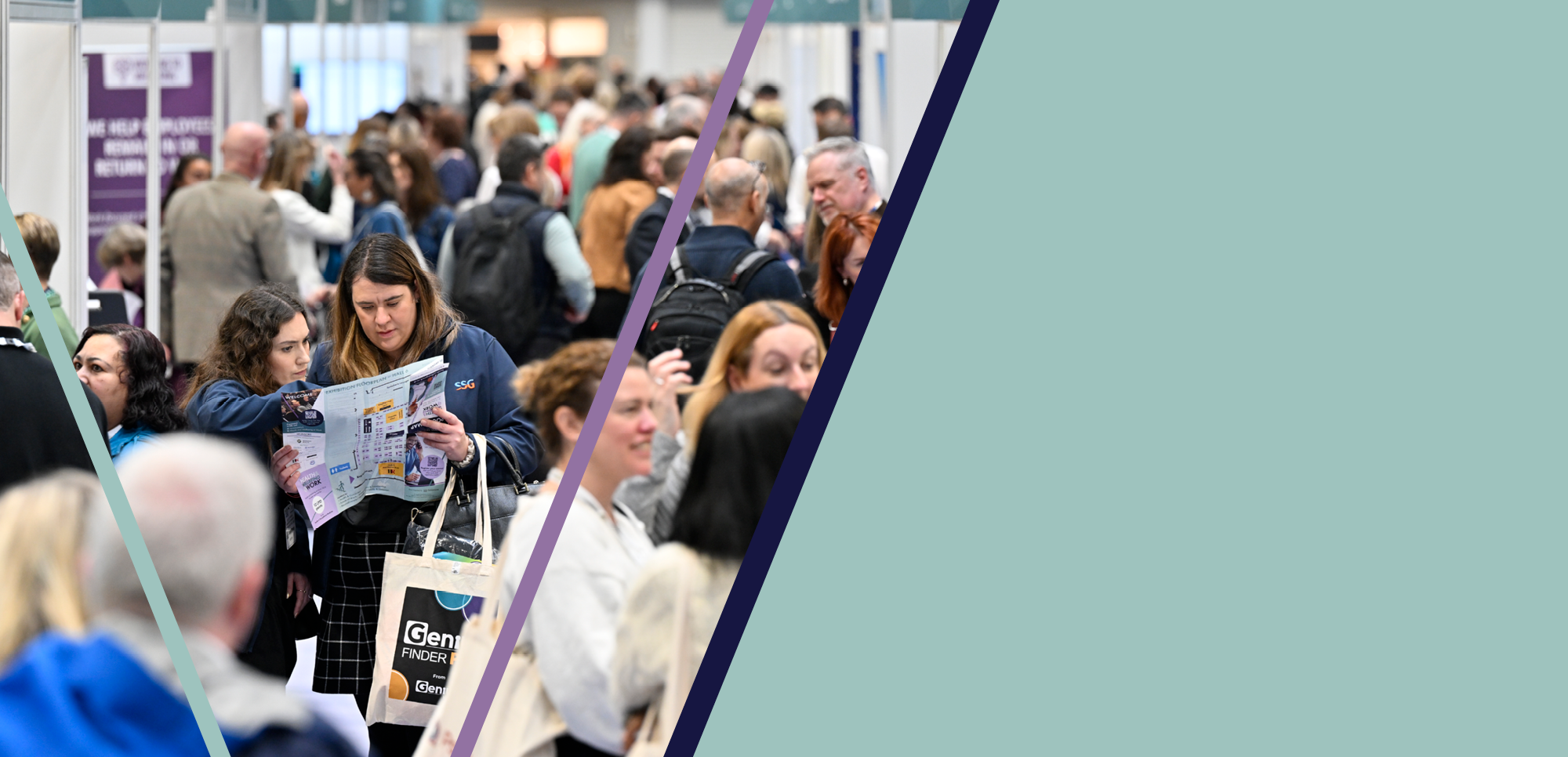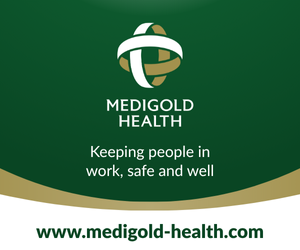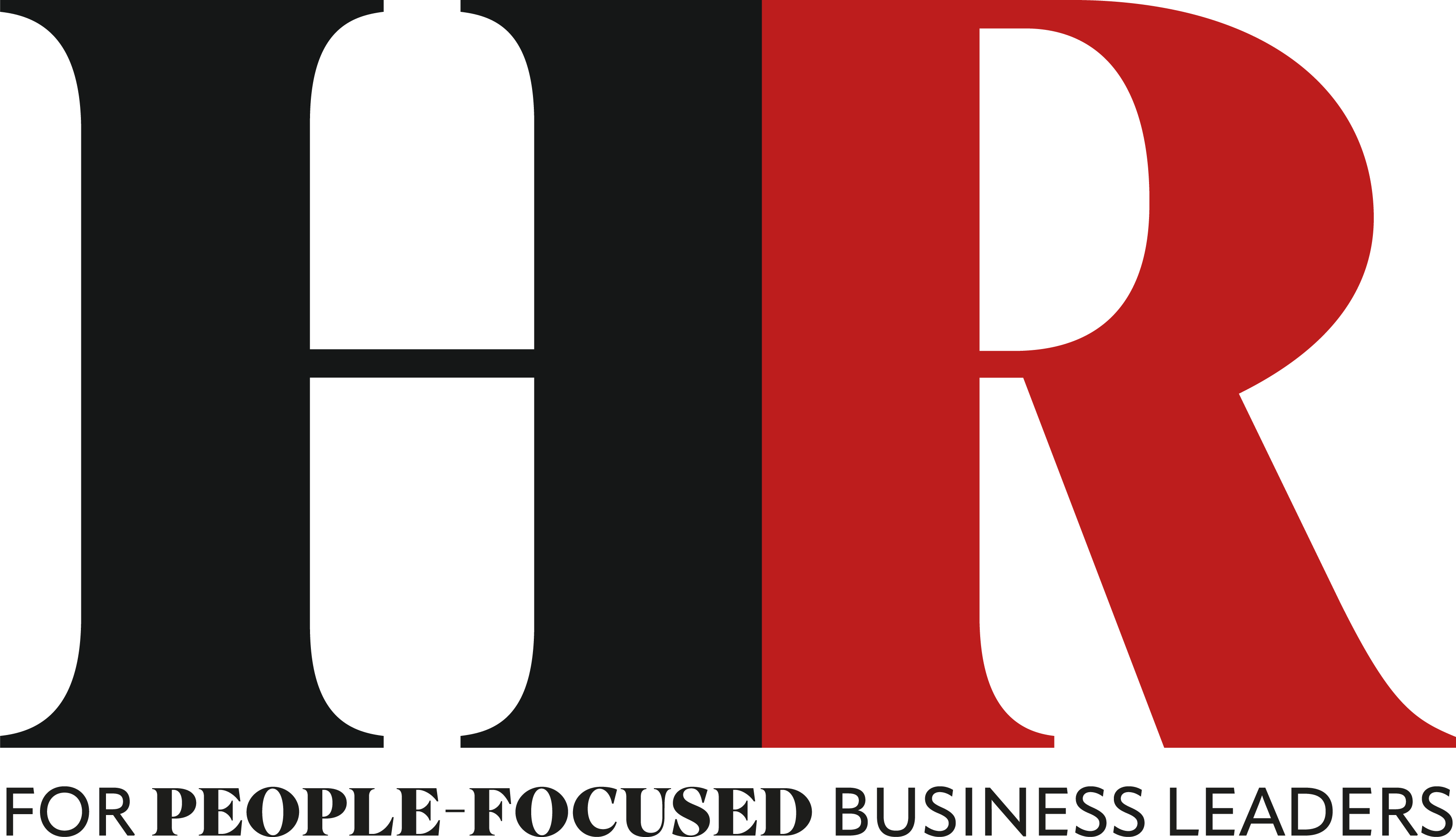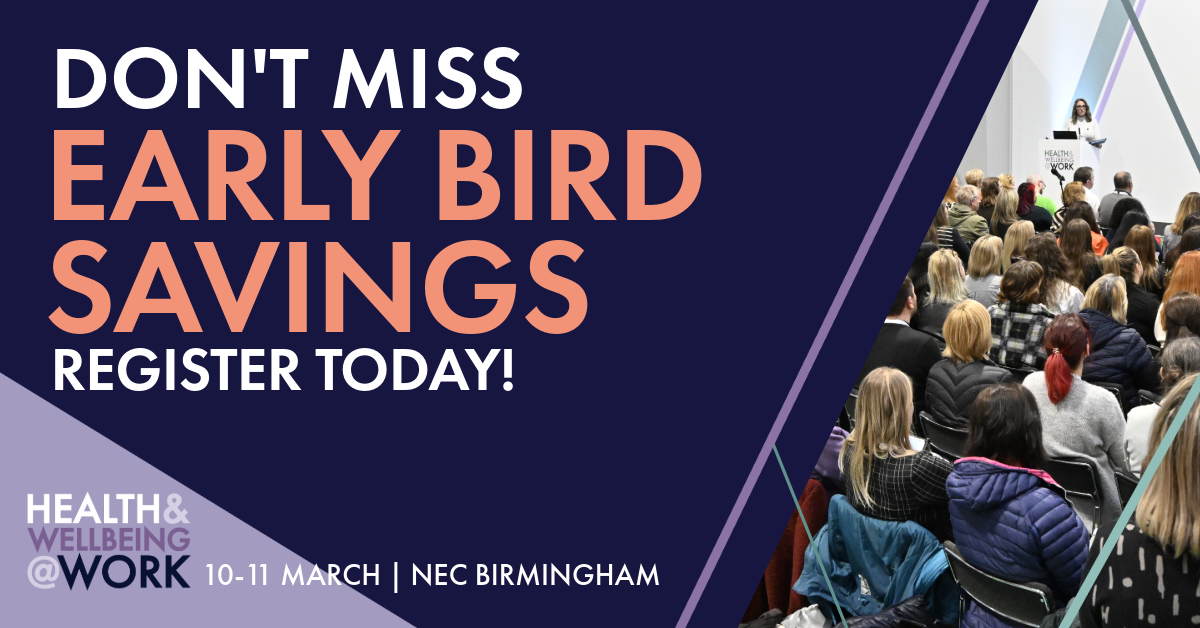HR spotlights wellbeing
)
Influential HR leaders inspired attendees of this year's Health and Wellbeing at Work exhibition and conference in Birmingham, on 11 and 12 March. HR’s finest showcased their views and expertise on stage, as part of the event’s 'Best Place to Work' seminar programme, chaired by the HR magazine team. Here’s a snapshot of the insights they shared:
- David Liddle, CEO of The TCM Group and president of the People and Culture Association
“Conflict resolution is a strategic imperative”
As AI capability develops, conflict resolution skills will become more important, argued Liddle. “The biggest conflict we’ll face in our generation is the conflict between humans and machines.”
Countering this will involve being the best human beings we can, and that means having and using “innovation, insight, empathy and growth”, and unlocking those skills during times of divergence and disagreement, Liddle explained. HR leaders must enable this work through dialogue, he said.
- Karena Starkie-Gomez, director of leadership and workforce, KPMG
“Foster safeness, soothing and connection”
To inspire compassionate leadership, and compassionate organisations that truly boost staff wellbeing, look at the bigger picture, advised Starkie-Gomez. Employers must spend time to really foster safeness, soothing and connection, she argued, “that’s the bit where compassion really comes from”.
Starkie-Gomez also emphasised that a compassionate workplace requires committed high-ranking leaders. Senior leaders must adopt an emotional tone, she said. “And make sure that people at line management level feel they have the time and the space to support their teams, to support themselves, and to feel like somebody's supporting them.”
- Matt Smeed, business psychologist
“Communities are the best way to crowdsource solutions in real time”
Smeed called on wellbeing leaders to find strength and support by connecting with each other, and joining communities. Being in a community supports what Smeed calls positive psychology, which can fuel the ability to integrate and influence ideas within an organisation.
He also shared his discovery of nine attributes that wellbeing leaders have in common, gleaned by using AI to analyse conversations generated by the online community he founded, the Working Well network. The attributes include an ability to build strong relationships across organisations, and resilience. “The ability to adapt, and look after your own wellbeing is key," he stated.
- Rob Briner, professor of organisational psychology, Queen Mary University of London
“Do you have a clear definition in your business of what you mean by wellbeing?”
In a lively and engaging presentation, Briner encouraged attendees to be clear about what’s important, or what’s going on, and what they can do about it. To assist in this task, Briner advocates an evidenced-based approach, which follows three principles: first, consult multiple sources; second, take a structured approach, and third, focus on the most trustworthy sources.
HR professionals don’t always use an evidence-based approach, which can fuel real change, as they are not incentivised to do so, said Briner; leaders tend to reward people who get a lot done, rather than those who make a difference. But making a difference is crucial, Briner suggested, not just to enhance job satisfaction but to enhance ethical standards.
He said: “We need to make sure we take an evidence-based practice approach because, without it, we are not being ethical. Why? Because we wouldn’t understand the issues or problems people are dealing with, and yet we’d still be intervening in their working lives.”
- Megan Reitz, professor of Hult Business School and associate fellow of Saïd Business School, Oxford University
“Small conversations – the ones that get parked because they’re not productive – are ever so important. They are the glue that binds us together”
Busy managers don’t have a time management problem, they have an attention management issue, argued Reitz. In order to thrive, and have more of the conversations that truly matter, we need to train our attention, and permit ourselves to pause, she stated. Read more from Megan Reitz on page 18.
Emma Langman-Maher, transformation practice lead, AECOM
“Neurodivergent people are probably hiding in your workplace”
Langman-Maher’s talk focused on the “hidden workforce” of neurodivergent people, the barriers that prevent disclosure and people being ‘out’ as neurodivergent, and misconceptions about neurodivergent people, including that all managers must be neurotypical (or to use Langman-Maher’s term: ‘neuronormal’). She described situations in which neurodivergent people have had to say: “I am not broken; I’m not crazy; I’m not stupid. I’m sane.”
Employers miss out on the talent that neurodiverse people can bring because neurodiverse people are socialised into thinking they’re not worth hiring, according to Langman-Maher: “It’s hard to believe that you’re really valuable talent, especially when the [application] form says: ‘Don’t worry if you’re neurodivergent, we’ll be really interested’… and then they’re not. It’s a sort of social gas-lighting. It’s not nice.”
Langman-Maher used many personal anecdotes in her engaging presentation. She explained, for example, how “neuronormals fixate on something they think I must find hard, but I don’t find hard”, and encouraged leaders to enquire, rather than assume.
- Binna Kandola, business psychologist
“One of the keys to psychological safety is the freedom to express oneself”
Kandola shared a range of historical and psychological reasons behind why LGBTQ+ people may struggle to feel safe at work, drawing on insights from a forthcoming book co-authored by fellow business psychologist Ashley Williams. To create inclusive workplaces, we need to embrace people who do things differently and who identify differently to ourselves, Kandola argued.
“Stigma is still a powerful factor,” he stated. To combat this, employers must create spaces for positive psychological experiences characterised by the personal freedom for employees to express themselves.
- Rob Baker, founder of Tailored Thinking
“Work design is one of the missing pieces of the wellbeing and performance problem”
Baker led an interactive session, using prompt cards to encourage conversations about how job roles can be better defined and more effective for the modern world of work. He offered a range of frameworks and ideas for attendees to explore and experiment with.
Presenting the idea that job crafting is an invitation to make work better, Baker used the analogy of a jacket – the ‘job jacket’ – to explain the concept: “The overall style of the jacket is fixed. But you can make small adjustments to make it better fit you as an individual. You can take up the sleeves, change the buttons, etc. This is what job crafting is about.
“It’s not about radically redesigning a job, but recognising that no two people doing the same job are doing it in exactly the same way. When we have that [right] fit, when we feel more connected to the work that we’re doing, we perform better.”
To implement better job design, Baker advised HR leaders to engage people early, communicate the benefits, and use peer influence and role models to shift the conversation. “If we do this, we can make a difference,” he said.
- Tracey Leghorn, chief business services officer, SUEZ Recycling and Recovery UK
“Do small things, and do them well”
Presenting on how she increased awareness about wellbeing, and engagement about the topic, in her organisation, Leghorn advised leaders to keep it simple, start with a few employee-led suggestions, and involve people from the grassroots of the organisation. Don’t be afraid to do things differently, she argued. For example, employee focus groups suggested that staff wanted diversity and inclusion work to be placed under SUEZ’s wellbeing agenda. It wasn’t an approach that the senior leadership team would have advised, but “placing inclusion under wellbeing was powerful for us”, she said.
Read the full HR magazine article here
HR magazine is the leading title for senior HR professionals and business leaders who want insight into and examples of high-performing, people-focussed organisations. We publish daily news and opinion pieces, the latest research, new thinking, best practice and strategic information. HR magazine has been serving the UK HR sector audience since 1991.










